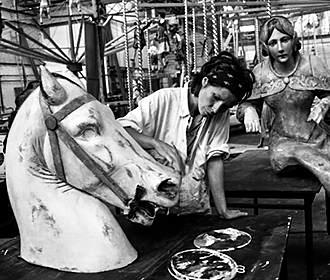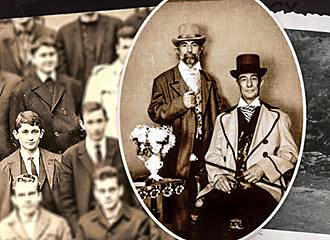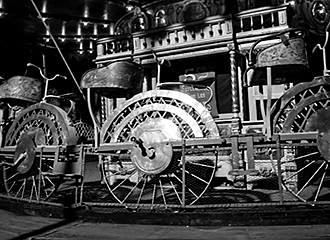History of the Musee des Arts Forains Fairground Museum
Located within the Pavillons de Bercy, the Musee des Arts Forains Museum has managed through its founder, to recreate some of the most fabulous fairground attractions from yesteryear like carrousels that you can get to actually experience.
The history of fun fairs and fairgrounds in Paris
Now until the 18th century a fair was known basically as a place for trade, yet this changed dramatically during the 19th century when a fair became a place for enjoyment and entertainment in Paris, which was mainly due to the changing economic climate within France.
Plus when you look back at the history of Paris starting with the French revolution that brought ideas of separating government and religious ideals, then came the Industrial Revolution, which saw a rise in the number of people moving from rural areas into more urban areas for work, that in turn led to some losses of traditional values. However, this was when a new phenomenon of the typical fun fair and fairground attractions was born for more social activities and entertainment.
So, it was between 1850 and 1900 that fairgrounds became a part of industrialised society where people could go and enjoy themselves and escape the normal difficulties and pressures of everyday life in a world that was becoming more hectic. And these fun fairs were seen as a reflection of the desires of the people looking for enchantment and extreme indulgence.
The Belle Epoque era was the height of their success, but as time went on, and after World War II, these theatres and travelling fun fairs began to disappear, especially the more old fashioned types of amusements such as carrousels.
These old fashioned amusements were eventually replaced by things like shooting games and attractions that provoked sensations of thrill, speed and adventure, rather than the sedate attractions of times gone by.
The history of Musee des Arts Forains
It all started with an actor and antiques dealer by the name of Jean Paul Favand, who began collecting objects from fairgrounds, fun fairs and the entertainment world over thirty-five years ago.
And when you consider that props from a theatre or opera would only been seen from afar, fairground attractions were meant to be seen up close and touched, just like the horses on a carrousel. These provided a fascination for Jean Paul Favand, because of the intricacy and elaborate carvings utilised, just as you would expect to find in a stately home or one of the chateaux in France.
Unfortunately, many people frown on such items, especially from the antique world, and after many years of meticulous restoration, the city of Paris still did not agree to helping set up a museum, nor did the state of France, but Jean Paul Favand wanted to keep the collection alive.
It was at this point he decided to set up a private museum that would be subsidised not just by an entrance fee, but also by hosting private events such as parties and corporate functions so that this part of history could be kept alive for future generations to experience.
So the Musee des Arts Forains, which translates to the Museum of Fairground Arts was set up in the Pavillons de Bercy in one of the fully restored wineries and then it was followed by two other sites, which are called the Venetian Rooms and the Theatre du Merveilleux that are both on the themes of entertainment as well.
The Venetian Rooms are where you will find the spirit of a traditional 18th century carnival and the spirit of Italy with gondola rides taking you back to historical Venice, automatons dressed in traditional opera costumes such as Casanova where they sing arias and the lagoon ride are just some of the features.
Whereas the Theatre du Merveilleux is a place of marvels and illusions with its industrial style architecture and scenery that portrays a popular 19th century form of entertainment referred to as a Theatre of Marvels, which is complete with different traditional games and automated music instruments like a piano.
A third area was then more recently created and opened in 2014, it is called the Magic Mirrors and was an original travelling ballroom that took many weeks just to set up the original ballroom and its decorations, which transports you back to the Belle Epoque era.
Complete with a circular ballroom made of mahogany wood and numerous bevelled mirrors, hence why the name of this pavilion, along with mercury-pearled valances and chandeliers, this pavilion has also been transformed for private and corporate events.
However, even if you are not booking a private event in one of these fabulous recreations, at least one or two of these Pavillons de Bercy rooms is part of the guided visit to the Musee des Arts Forains.


